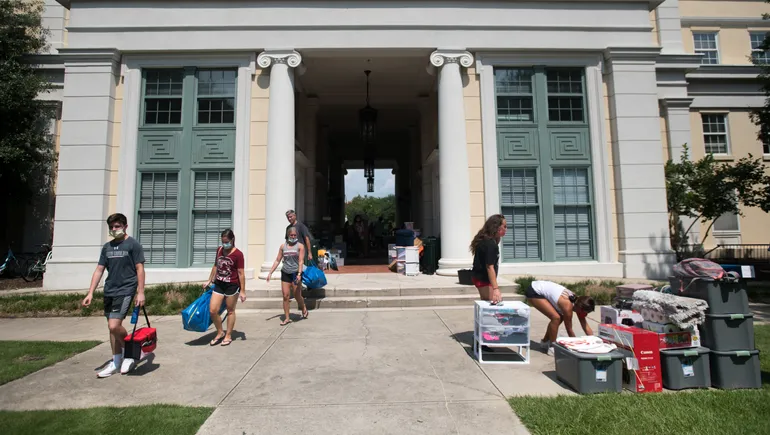Dive Brief:
- Undergraduate enrollment rose this fall for the second year in a row, up 3% compared to similar early data from fall 2023, according to preliminary figures released Wednesday by the National Student Clearinghouse Research Center.
- Enrollment jumped 1.9% in bachelor’s degree programs and 4.3% in those for associate degrees. While all credential types saw gains, the number of undergraduate certificate seekers increased the most, at 7.3%.
- However, enrollment among first-year students shrank 5%, the first dip since the decline seen at the start of the pandemic. Declining enrollment among 18-year-olds — a proxy for students who attend college directly after high school — accounted for most of that drop, the clearinghouse said.
Dive Insight:
Fall 2023 marked the first time undergraduate enrollment had increased since the start of the COVID-19 pandemic, according to the clearinghouse.
This semester, enrollment largely fared well despite numerous headwinds, including the U.S. Supreme Court’s June decision to ban race-conscious admissions and the botched rollout of the Free Application for Federal Student Aid for the 2024-25 academic year. Yet the declines in first-year students warn of potential cracks in the K-12 student pipeline.
“It is startling to see such a substantial drop in freshmen, the first decline since the start of the pandemic in 2020 when they plunged nearly 10%,” Doug Shapiro, the research center’s executive director, said in a statement.
Overall, undergraduate growth is being driven by students who had previously begun their first year of college, researchers said. The clearinghouse includes in that group both dual-enrolled high school students and students who left college without completing a degree or certificate.
This past spring, the clearinghouse found an increase in reenrollment among students who previously left college without completing a credential. Researchers also recently found that persistence rates among first-time students had reached a decade high.
“Both of those trends appear to be continuing this fall,” Shapiro said during a call with reporters on Tuesday.
Of the 42 states with sufficient data for analysis, only New Hampshire, West Virginia and Missouri experienced a downtick in students. And undergraduate enrollment grew at all types of institutions, though some made out better than others.
At public baccalaureate colleges that primarily grant associate’s degrees, the number of students rose 5.2%. For-profit four-year colleges experienced a 4.9% increase, and enrollment at public two-year colleges jumped 4.7%.
Public and private nonprofit four-year institutions saw more limited undergraduate growth, at 2.2% and 1.4%, respectively.
Undergraduate enrollment of men and women grew at similar rates: 2.1% and 2.3%, respectively.
Hispanic, Black, Asian and multiracial populations all saw undergraduate enrollment increases of at least 4% year over year. White undergraduate students were the only racial or ethnic group showing a decline, dropping by 0.6%.
The preliminary data set includes about 52% of Title IV, degree-granting colleges that report to the clearinghouse. Together, the institutions enroll just under 9 million students. The clearinghouse’s final enrollment report is expected in January.
Colleges have long been bracing for an expected dropoff in high school graduates due to declining birth rates. Now, first-year enrollment has in fact dropped across all racial and ethnic groups, the clearinghouse said.
First-year enrollment declined the most among White students, a decrease of 11.4%, followed by a 6.6% drop for multiracial students and 6.1% for Black students. The number of Asian and Hispanic first-year students fell by 2.8% and 1.4%, respectively, reductions the clearinghouse described as “relatively muted.”
This is the first time the clearinghouse has enrollment disaggregated data for 18-year-olds, according to Shapiro.

